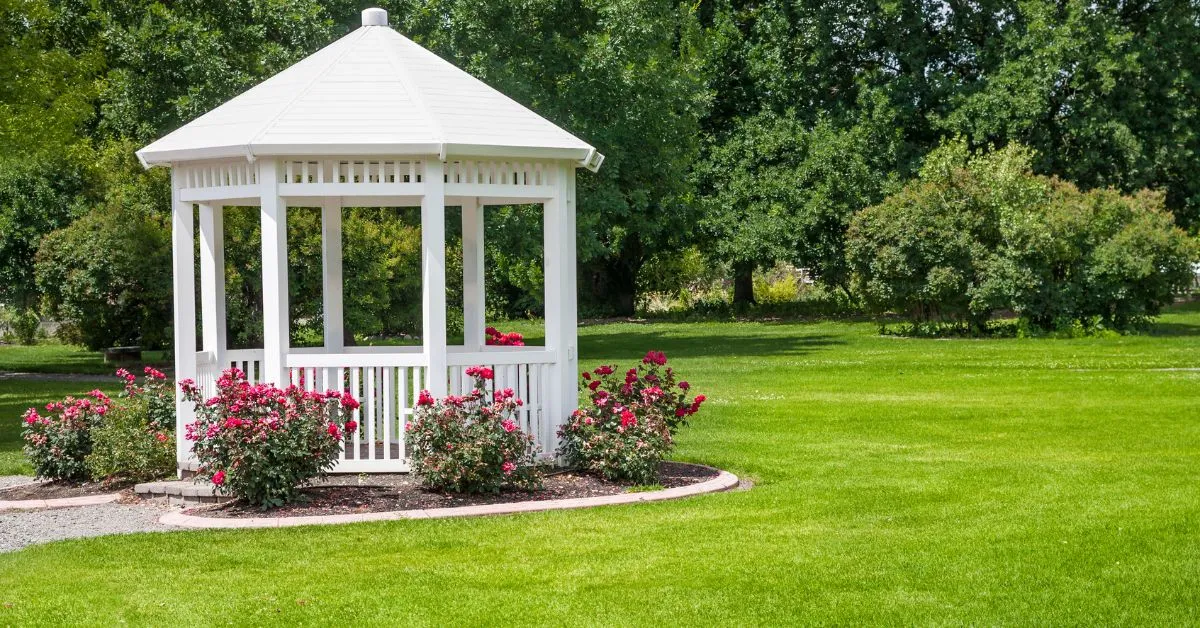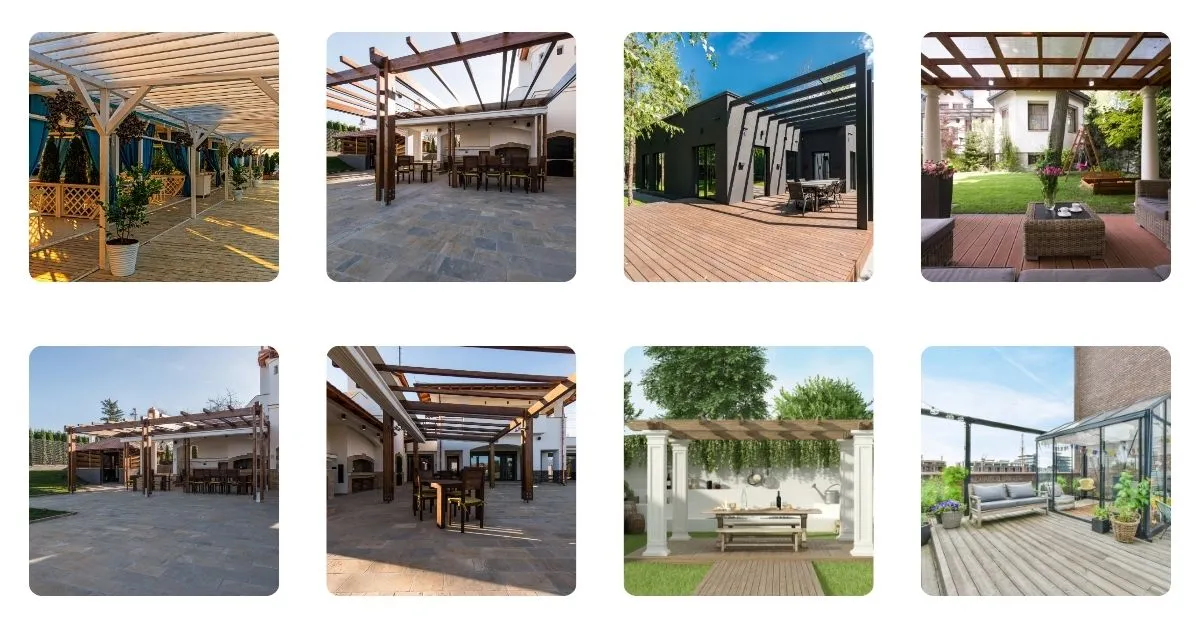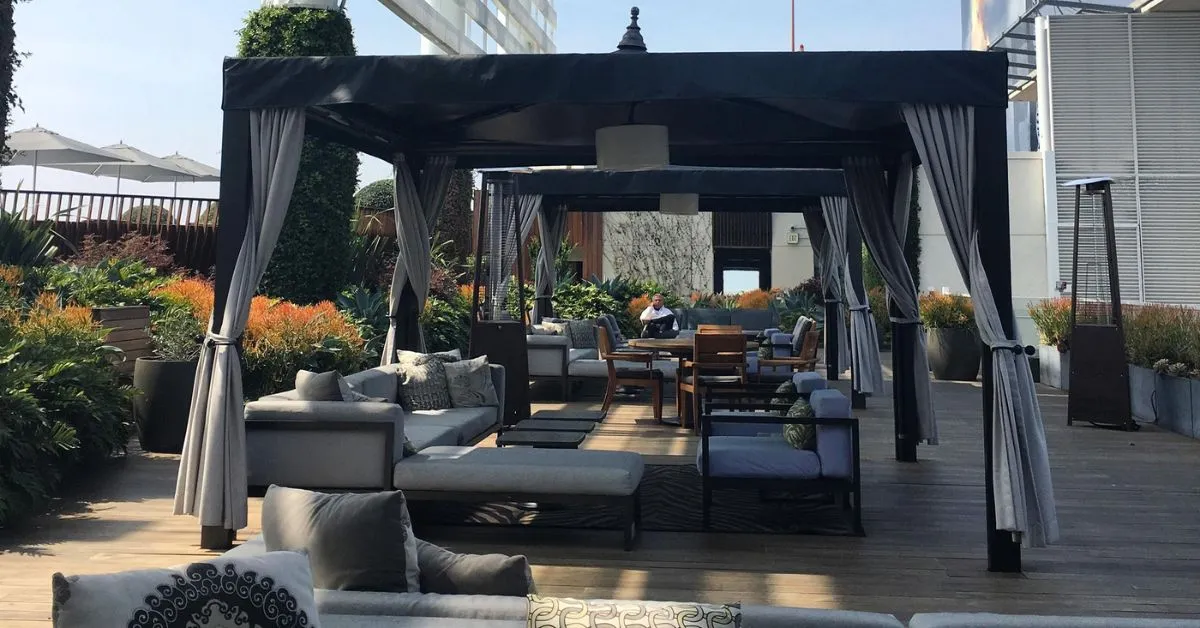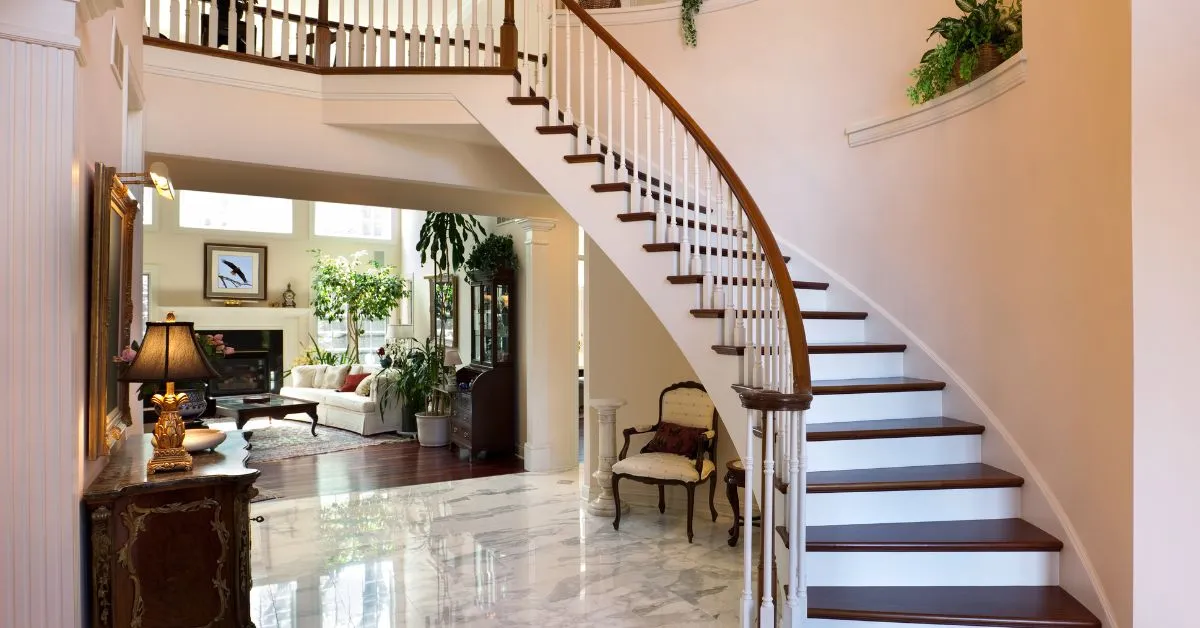Terrace gazebos are becoming an essential feature for homeowners looking to enhance their outdoor spaces.…

Adding a gazebo to your backyard can transform your outdoor space into a serene retreat, perfect for relaxation, dining, and social gatherings. Whether you’re working with a gazebo manufacturer or exploring ready-made options, there are various styles, materials, and sizes to consider, making the selection process feel overwhelming. Here’s a comprehensive guide to help you make an informed choice and create the ideal outdoor oasis.
Table of Contents
Define Your Purpose
Having a clear purpose will help you decide on the style, size, and additional features you may want in your gazebo.
- Entertainment Area: If you plan to entertain guests frequently, choose a larger gazebo with plenty of seating and options for dining tables and outdoor furniture.
- Relaxation Space: For a cozy relaxation spot, go for a smaller, more intimate gazebo with a comfortable bench or a couple of lounge chairs.
- Garden Feature: If the gazebo is primarily to enhance your garden’s aesthetics, opt for an open and decorative design that complements the landscaping.
- Outdoor Workspace or Meditation Area: A quiet, private gazebo can serve as a home office or meditation spot. Privacy screens and comfortable seating may be essential here.
Determine the Ideal Size for Your Space
A gazebo should fit harmoniously with your outdoor space rather than overpower it.
- Measure Your Yard: Before selecting a gazebo, measure your yard to see how much space is available. Ensure there’s ample room for the gazebo without crowding other features.
- Consider Proportions: For smaller yards, a compact 8×8 ft gazebo might be ideal, while larger spaces can accommodate 12×12 ft or even larger structures.
- Leave Space Around the Gazebo: For landscaping and walkways, leave a few feet around the gazebo, enhancing its look and making it easier to maintain.
Select the Right Material
Your choice of material will affect your gazebo’s durability, appearance, and maintenance needs.
- Wood: A classic choice, wood gazebos offer a natural, timeless look that complements lush garden landscapes. Cedar and pine are popular options for their durability and resistance to rot. Regular maintenance, like staining, is necessary to prevent wear.
- Metal: For a sleek, modern look, consider metal gazebos, often made of aluminium or steel. They’re durable, low-maintenance, and resistant to weather but can heat up in direct sunlight.
- Vinyl: Vinyl gazebos are highly durable, weather-resistant, and require minimal maintenance. They often come in white or neutral tones, making them versatile and easy to match with other garden elements.
- Fabric: Fabric gazebos or soft-top gazebos are generally less expensive and lightweight, perfect for seasonal use. However, they may require replacement more often due to wear from exposure to sun and rain.
Transform your backyard with the perfect gazebo! Contact us today to explore stylish and durable options that fit your space and needs.
Consider Style and Design
Choose a style that complements your existing landscape and adds value to your outdoor living space.
- Traditional: A classic hexagonal or octagonal design with wood trim offers an elegant, timeless appearance, perfect for traditional gardens.
- Modern: Sleek, minimalist designs with clean lines, often featuring metal frames and neutral tones, create a contemporary look.
- Rustic: Rustic designs with reclaimed wood and open sides blend well with natural surroundings, offering a relaxed, organic feel.
- Japanese-inspired: For a unique, tranquil vibe, consider a Japanese-style gazebo with wooden slats, lattice, and a Zen-inspired roofline.
Choose the Roof Type for Aesthetic and Practical Benefits
The roof style and material impact both the look and durability of your gazebo.
- Single-Tiered Roof: Provides simple, uniform coverage and is easy to install. This classic design works well for small to medium-sized gazebos.
- Double-Tiered Roof: Often seen on more elaborate designs, double-tiered roofs allow for improved airflow and add a unique architectural flair.
- Hardtop Roof: Made from materials like metal or polycarbonate, hardtop roofs are durable and weather-resistant, offering year-round protection from sun, rain, and snow.
- Soft-Top Roof: Soft-top roofs are usually made of weather-resistant fabric and are ideal for seasonal use. However, they may require replacement over time.
Privacy and Accessibility Options
Privacy and accessibility options make the gazebo more versatile for various activities.
- Curtains or Privacy Screens: For added seclusion, consider gazebos that allow for curtains or screens. These are useful for creating a private outdoor retreat or blocking wind.
- Mosquito Netting: If insects are a concern, choose a gazebo that can be fitted with mosquito netting. This is especially helpful if you’ll be using the gazebo in the evenings.
- Easy Entry and Exit: Ensure that the gazebo has wide, easily accessible entrances, especially if you plan to furnish it with larger furniture.
Consider Climate and Weather Conditions
Selecting weather-appropriate materials and designs will help your gazebo last longer and provide year-round enjoyment.
- Wind Resistance: If you live in a windy area, choose a sturdy structure, possibly anchored into the ground. Metal or hardtop gazebos are ideal for withstanding stronger winds.
- UV Protection: If your gazebo will receive direct sunlight, consider UV-protected materials like polycarbonate roofing or coated fabric to ensure longevity.
- Snow Load: In areas with heavy snow, opt for a gazebo with a sloped roof to prevent snow accumulation and ensure structural integrity.
Budget Considerations
Balancing your budget with the gazebo’s quality and features ensures you get the best value.
- Set a Realistic Budget: Gazebo costs can vary significantly depending on materials, size, and design. Simple soft-top models start at around ₹10,000 ($120), while custom-built or luxury options can exceed ₹1,00,000 ($1,200).
- Maintenance Costs: Consider future maintenance, especially if choosing wood, which may require staining and sealing over time.
- Accessories: Factor in the cost of any desired accessories, such as lighting, seating, mosquito nets, or curtains.
Add the Finishing Touches with Furniture and Décor
Decorating the gazebo can make it a true extension of your home’s style.
- Outdoor Furniture: Choose weather-resistant furniture to create a cozy atmosphere inside your gazebo. Consider seating, tables, and even hammocks for a personal touch.
- Lighting: For evening use, add solar-powered string lights or lanterns to give your gazebo a warm, inviting glow.
- Plants and Greenery: Surround your gazebo with plants or even add climbing plants to its sides for a natural, integrated look.
Frequently Asked Questions
What is the best shape for a gazebo?
The best shape depends on your style and space. Round gazebos offer a classic look, while rectangular and square shapes are versatile for most backyards, fitting well into corners and against walls.
How do I know what size gazebo I need?
Consider how you’ll use the space—small gatherings may need a 10×10 ft gazebo, while larger gatherings benefit from 12×12 ft or more. Measure your yard and plan around nearby structures or garden features.
What material is best for a gazebo?
Wood provides a natural, traditional look but requires maintenance; metal, such as aluminium, is durable and low maintenance, while vinyl offers a balance of both styles and minimal upkeep. Choose based on climate and style preferences.
Conclusion
Choosing the perfect gazebo for your backyard is all about finding the balance between function, style, and durability. By considering your needs, the available space, materials, and budget, you can select a gazebo that enhances both your outdoor living experience and your property’s aesthetic. With the right choice, your gazebo will become a cherished space for relaxation, entertainment, and quality time with loved ones for years to come.


